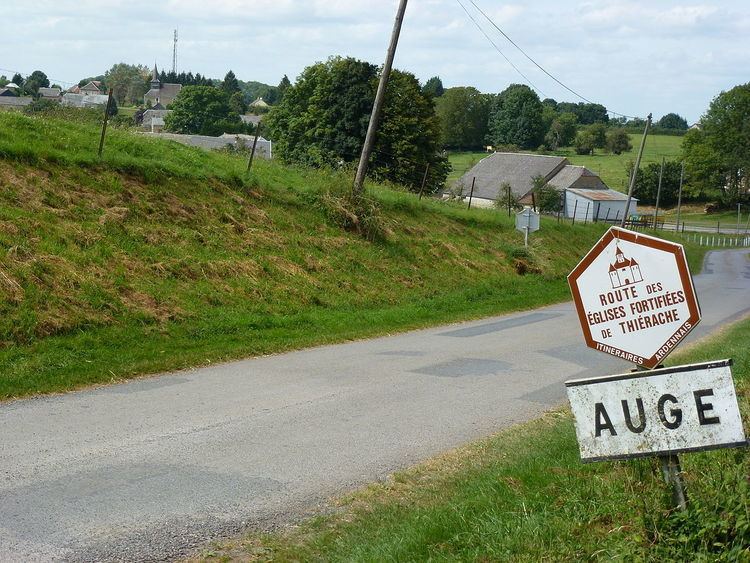Area 4.5 km² | Canton Signy-le-Petit Population (2010) 52 Local time Wednesday 8:13 PM | |
 | ||
Weather 8°C, Wind SW at 21 km/h, 96% Humidity | ||
Auge is a French commune in the Ardennes department in the Grand Est region of north-eastern France.
Contents
- Map of 08380 Auge France
- Geography
- Toponymy
- History
- Administration
- Demography
- Sites and monuments
- Notable people linked to the commune
- References
Map of 08380 Auge, France
Geography
Auge is located some 45 km west by north-west of Charleville-Mézières and 22 km east by south-east of Hirson. The western border of the commune is the border between the departments of Ardennes and Aisne. Access to the commune is by the European route E44 (D 8043) from Hirson which passes through the north of the commune and continues east to Maubert-Fontaine. Access to the village is by either the Grande Rue or by the Ruelle de l'Église which both branch south from the E44. Apart from a band of forest on the south-eastern border (The Bois de Moirvaux) and some patches of forest in the south-west the commune is entirely farmland.
Toponymy
The name of the town was written Ogiae in 1112 in a privilege of Pope Paschal II to the Abbey of Saint-Nicaise in Reims and as Oggeium in a bull of Innocent II for the same monastery at Reims.
History
This site has been on an ancient road between Mézières and the North since Classical Antiquity. Gallo-Roman foundations, coins, and pieces of pottery have been found.
Administration
List of Successive Mayors
(Not all data is known)
Demography
In 2010 the commune had 52 inhabitants. The evolution of the number of inhabitants is known from the population censuses conducted in the commune since 1793. From the 21st century, a census of communes with fewer than 10,000 inhabitants is held every five years, unlike larger towns that have a sample survey every year.
Sources : Ldh/EHESS/Cassini until 1962, INSEE database from 1968 (population without double counting and municipal population from 2006)
Sites and monuments
The Tombstone of Jacques de Corderand, his wife, and his son (18th century) in the Church of Saint-Gorgery is registered as an historical object.
